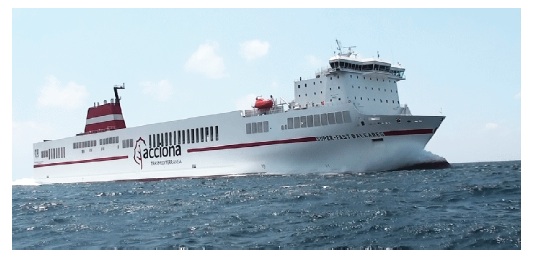Shipbuilding and new requirements to reduce the environmental impact of ships: New technological challenges and business opportunities
DOI:
https://doi.org/10.25043/19098642.58Keywords:
ship environmental impact reduction, noise & vibrations, underwater radiated noiseAbstract
New and increasingly demanding requirements of reducing the environmental impact of all types ofships from all countries, along with regulatory institutions like the new "Green Policy" of the EuropeanUnion, leads to the development of a series of regulations/directives, which will immediately affect boththe owner and the builders worldwide. This requires introducing modifications in the vessel design tofulfill these requirements and, ultimately, improve their exploitation while avoiding penalties and/orrestrictions. Awareness of these requirements by some Spanish owners has allowed Spanish shipbuildingto be positioned strategically at the forefront of technology to fulfill these requirements. This work, aftera review of those Directives affecting ship design, focuses on the presentation of the results obtained intwo Ro-Ro Vessels. These vessels, given their design and performances, are a "technological reference"in the new scenario of high environmental performance requirements: Noise and vibrations on board,noise radiated to the harbor, and noise radiated to the water.Downloads
References
European Commission Green Paper on Future Noise Policy (COM (96) 54 540). 1996.
Directive 2002/49/EC of the European Parliament and of the Council of 25 June 2002 relating to the assessment and management of environmental noise.
BELTRÁN P; TESORERO M. ANTONIA, "Spanish Shipbuilding ready to meet the new and demanding Environmental Requirements: New Challenges and Business Opportunities" Ingeniería Naval No. 887, December. [4] IMO Resolution A.468 (XII): Code on Noise Levels on Board Ships. IMO 1975.
ISO 6954:2000: Mechanical vibration - Guidelines for the measurement, reporting and evaluation of vibration with regard to habitability on passenger and merchant ships.
ISO 2922/2000 Acoustics -- Measurement of airborne sound emitted by vessels on inland waterways and harbours.
ICES Cooperative Research Report No. 209. Underwater noise of research vessels, review and recommendations. ISSN 1017-6195, May 1995.
ANSI/ASA S12.64-2009/Part 1: Quantities and Procedures for Description and Measurement of Underwater Sound from Ship - Part 1: General Requirements.
DNV Rules for Classification of Ship. New buildings, Special Equipment and Systems Additional Class: Part 6, Chapter 24 Silent Class Notation, January 2010.
BELTRÁN P., "Noise vibration on ship prediction: Basic engineering tool to fulfill the current requirements of comfort and quality". Naval Engineering, October 2001.
BELTRÁN P. AND OTHERs, "Silent Fishing Vessels. A milestone for small and big Spanish shipyards. Lessons learnt.". Separata Naval Engineering, February 2.006.
BELTRÁN P., "Oceanographic ship Miguel Oliver". Naval Engineering No. 848, May 2007.
BELTRÁN P. "Oceanographic Ship "Miguel Oliver": The excellence on Noise and Vibration on board fulfilling ICES- Nª209. First Prize 47th Congress of Naval Engineering and Maritime Industry. October 2008.
ENCISO FERNÁNDEZ, C., "About noise and vibration transmission in the MAPA 70 of M. Cies shipyard" Naval Engineering. May 2007.
PÉREZ GÓMEZ G., PÉREZ SOBRINO M., GONZÁLEZ-ADALID J., GARCÍA GÓMEZ A., MASIP HIDALGO J., QUEREDA LAVIÑA R., MINGUITO CARDEÑA E., BELTRÁN P., "A milestone in the Spanish naval propelling. Profitability of a wide R&D program. 75th Anniversary Award. AINE. Naval Engineering, June 2006.

Published
How to Cite
Issue
Section
License
The authors who publish in this Journal certify that:
- The work submitted for publication in The Ship Science and Technology journal, was written by the author, given that its content is the product of his/her direct intellectual contribution.
- All data and references to material already published are duly identified with their respective credits and are included in the bibliographic notes and quotations highlighted as such.
- All materials submitted for publication are completely free of copyrights; consequently, the author accepts responsibility for any lawsuit or claim related with Intellectual Property Rights thereof, Exonerating of responsibility to The Science and Technology for the Development of Naval, Maritime, and Riverine Industry Corporation, COTECMAR.
- In the event that the article is chosen for publication by The Ship Science and Technology journal, the author state that he/she totally transfers reproduction rights of such to The Science and Technology for the Development of Naval, Maritime, and Riverine Industry Corporation, COTECMAR.
- The authors retain the copyright and transfer to COTECMAR the right of publication and reproduction of the work which will be simultaneously subject to the Creative Commons Attribution License (CC -BY) , which allows the license to copy, distribute, display and represent the work and to make derivative works as long as it recognizes and cites the work in the manner specified by the author or licensor.
- For more information about the Creative Commons Attribution License (CC -BY) and his use and scope, please visit the following web page https://creativecommons.org/licenses/by-sa/4.0/legalcode








